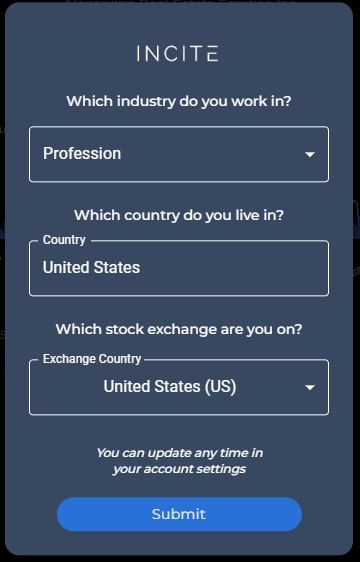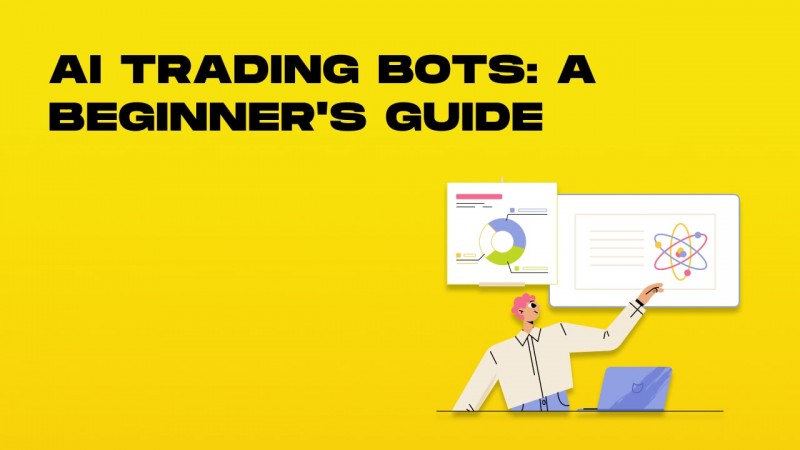20 Excellent News For Selecting AI Stock Investing Platform Sites
20 Excellent News For Selecting AI Stock Investing Platform Sites
Blog Article
Top 10 Tips To Evaluate The User Experience And Interface Of Ai Platforms For Trading Stocks
The User Interface (UI) and User Experience (UX) of AI platforms for predicting and analyzing stocks are essential to making sure that they are efficient, usable and overall satisfaction. An undesigned interface can affect your decision-making process even when you have strong AI models. Here are 10 top suggestions for evaluating the UI/UX.
1. The user's ease of use as well as the user-friendlyness of the product are assessed
Navigation: Ensure that the platform is simple to navigate using clearly defined menus, buttons and workflows.
Learning curve: Determine the speed at which new users learn and operate the platform with no any extensive training.
Consistency: Check for consistent designs (e.g. buttons, designs or colors, etc.)) across the platform.
2. Make sure you check for customizability.
Dashboard customization: Verify whether dashboards can be customized by users to display relevant information, charts, and metrics.
Layout flexibility: Make sure that the platform permits users to resize or rearrange widgets and charts.
Themes and preferences: Check whether the platform supports dark and light modes, or other visual preferences.
3. Visualize data using the Assess Tool
Quality of the chart: Ensure that the platform provides interactive charts with high quality (e.g. candlestick charts, lines charts, etc.)) which include zoom and pan functions.
Visual clarity: Make sure that the data is clearly displayed, with appropriate labels or legends. Also, check the tooltips.
Verify that the visualisations are continuously updated in real-time to reflect any changes in the market.
4. Speed and Test Responsiveness
Speed of loading: Make sure whether the platform is loading quickly, even with huge datasets.
Real-time performance You must ensure that your platform is able to handle data feeds immediately without delays or lags.
Cross-device Compatibility: Make sure that the application works with various devices (desktops or smartphones).
5. Examine Accessibility
Mobile app accessibility: Determine whether the platform is equipped with a mobile app that is fully capabilities to trade on the go.
Keyboard shortcuts: Make sure the platform supports keyboard shortcuts to the most powerful users.
Accessibility features: Make sure that the platform complies with accessibility standards (e.g. screen reader compatibility, high contrast modes).
6. Examine the Search and Filter Functions
Search functionality: Make sure that your platform permits you to search quickly for indexes, stocks and other assets.
Advanced filters: Discover the existence of filters that can be applied to the results.
Searches saved to your account - Check that the application allows you to save frequently-used search filters or searches.
7. Be sure to check for alerts and notifications
Alerts that can be customized. Users can set alerts for certain circumstances (e.g. prices thresholds, spikes in the volume).
Delivery of notifications: See whether notifications can be sent through multiple channels (e.g. email, SMS or app notifications).
Make sure to check the alerts' timing and accuracy.
8. Review the integration with other tools
Broker integration: Ensure the platform is integrated seamlessly with your broker account in order to aid in trade execution.
API access: Determine whether the platform allows API access for advanced users to build custom tools or workflows.
Third-party interfaces: Make sure you know if the platform supports integration with third-party tools (e.g. Excel or Google Sheets) and trading robots.
9. Review Help and Support Features
Check the onboarding tutorials.
Help center: Ensure that the platform provides a comprehensive knowledge base or help center.
Customer service: Check to find out if the platform has prompt customer service.
10. Test Overall Customer Satisfaction
User feedback: Reviews and testimonials are used to measure overall satisfaction of users with the UI/UX platform.
Free trial period: Try the platform at no cost and assess its effectiveness.
Check the platform's error handling.
Bonus Tips
Aesthetics. The functionality is important, but a visually appealing layout can enhance the experience of users.
Testing the performance of the platform under extreme stress to ensure that it's flexible and stable in periods of high volatility.
Find out if the platform offers an active user community in which users can exchange feedback and share suggestions.
Follow these tips to assess the user interface and UX of AI platform for analyzing and predicting stocks. This will ensure that they are efficient and user-friendly. They must also be aligned with trading needs. An excellent UI/UX enhances your ability make informed decisions, and to effectively execute trades. View the top rated investment ai tips for website recommendations including incite, ai for stock trading, trading ai, ai investing platform, ai investing app, ai for stock predictions, ai stock trading, ai stock market, ai stock, incite and more.
Top 10 Tips On Assessing The Scalability Of Ai Stock Predicting/Analyzing Trading Platforms
It is important to assess the scalability and performance of AI-driven trading and stock prediction platforms. This will ensure that they're able to cope with the increasing volume of data, market complexity, and user demands. Here are the top ten ways to determine the capacity of these platforms.
1. Evaluate Data Handling Capacity
Tip: Check if the platform can analyse and process large data sets (e.g. historic stock data, real-time market feeds, and alternative data such as news or social media).
The reason: Scalable systems need to manage data volumes that are growing without performance degradation.
2. Test Real-Time Processing Skills
TIP: Examine the capability of the platform to handle real-time information streams, like live stock prices or breaking news stories.
Why: The real-time analysis of trading decisions is crucial because delays could lead to you missing out on opportunities.
3. Cloud Infrastructure and Elasticity: Check it out
Tips: Find out whether the platform utilizes cloud-based infrastructure (e.g., AWS, Google Cloud, Azure) and is able to scale resources dynamically.
Cloud-based platforms offer the flexibility. They permit the system to be scaled down depending on the need.
4. Examine Algorithm Efficiency
Tip: Check the computational efficacy and the accuracy of AI models to make predictions.
The reason is that complex algorithms can be resource-intensive. Making them more efficient to make them scalable is important.
5. Learn about parallel processing and distributed computing
Tips: Make sure that the platform supports distributed computing or parallel processing frameworks (e.g., Apache Spark, Hadoop).
The reason: These advanced technologies offer faster data analysis and processing across multiple nodes.
Examine API Integration and Interoperability
TIP: Examine the platform's integration with external APIs.
The reason: seamless integration means that the platform is adaptable to new data sources and trading environments.
7. Analyze User Load Handling
Use a high-traffic simulation to check the response of the platform under pressure.
What's the reason? The performance of a platform that is scalable should not be affected by the growth of users.
8. Examine the Retraining Model and its Adaptability
Tip: Determine how often and effectively the AI models are trained with new data.
The reason is that models must continuously change to keep up with the ever-changing market to stay accurate.
9. Examine fault tolerance and redundancy
Tip. Make sure your platform has failover systems and redundancy for hardware orsoftware problems.
What's the reason? Trading downtime can be costly, so the ability to tolerate faults is essential to ensure scalability.
10. Monitor Cost Efficiency
Tip: Calculate the costs of scaling your platform. Consider cloud resources, data storage and computational power.
The reason: Scalability should not be at the expense of insufferable costs. It is therefore important to strike a fair balance between performance and cost.
Bonus Tip: Future-Proofing
Check that the platform has been built to take advantage of new technologies (e.g. quantum computing, quantum computing, advanced NLP) and to adapt to changes in the regulatory environment.
You can assess the scalability and efficiency of AI trading and stock prediction systems by focusing on this aspect. This will ensure that they're efficient, robust and prepared for growth. Read the recommended this post on best ai for stock trading for more advice including ai options, best ai trading platform, ai share trading, ai share trading, chart analysis ai, ai stock prediction, ai tools for trading, ai software stocks, ai share trading, best ai penny stocks and more.